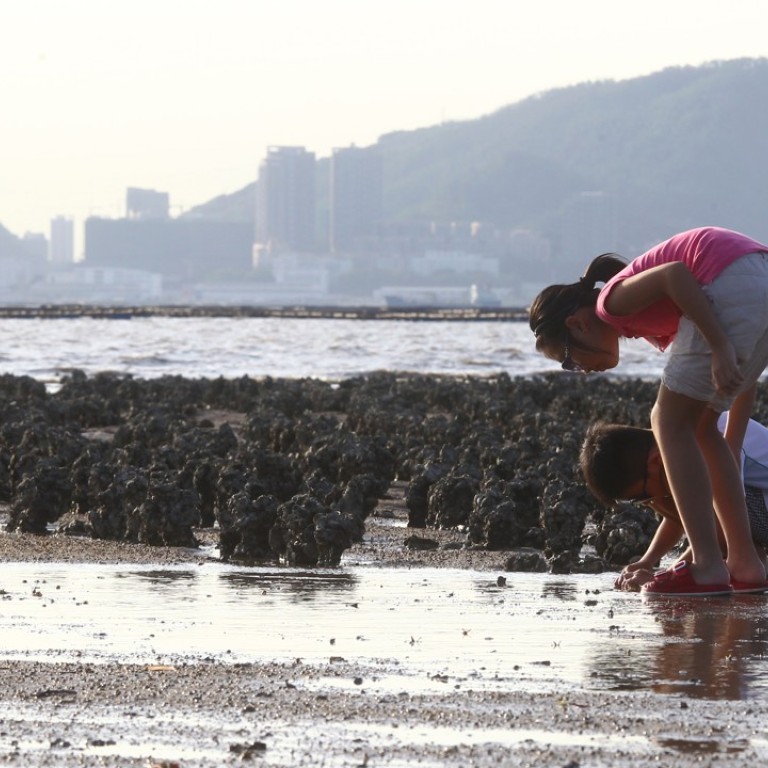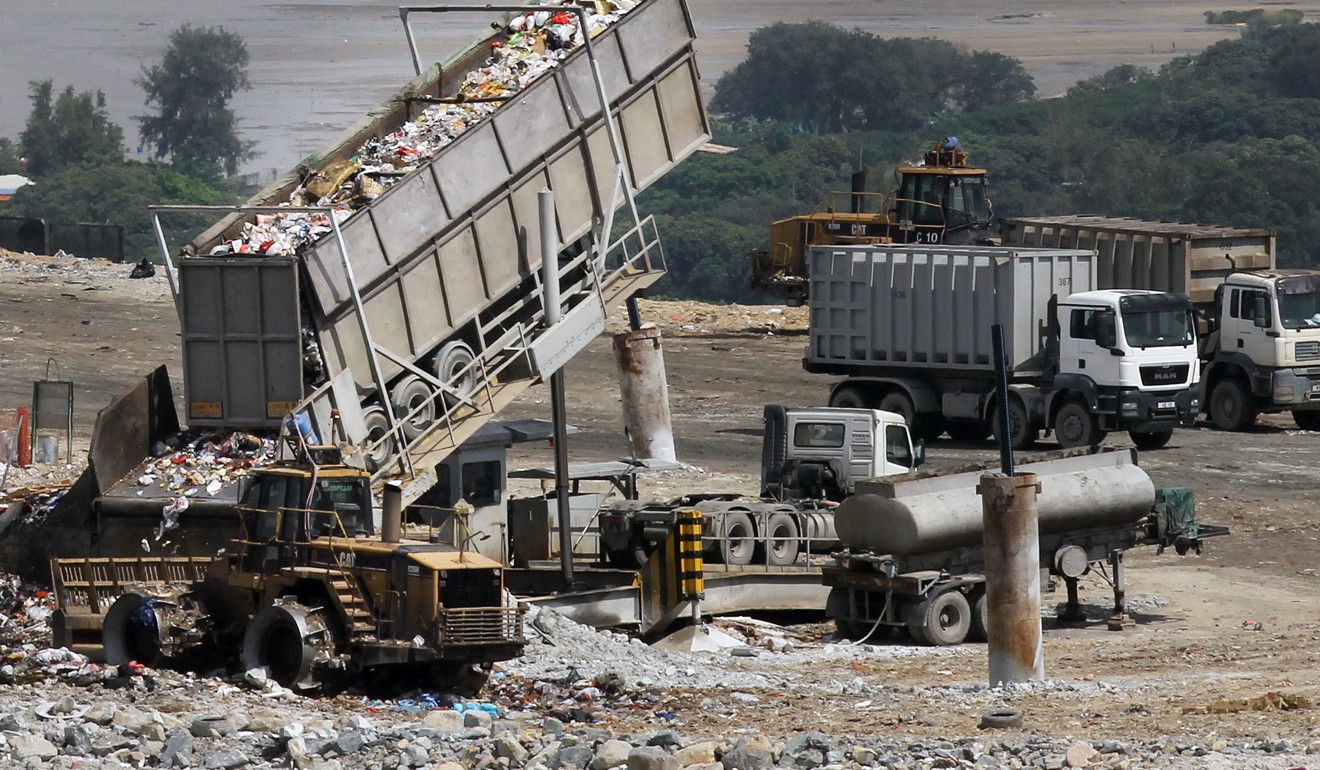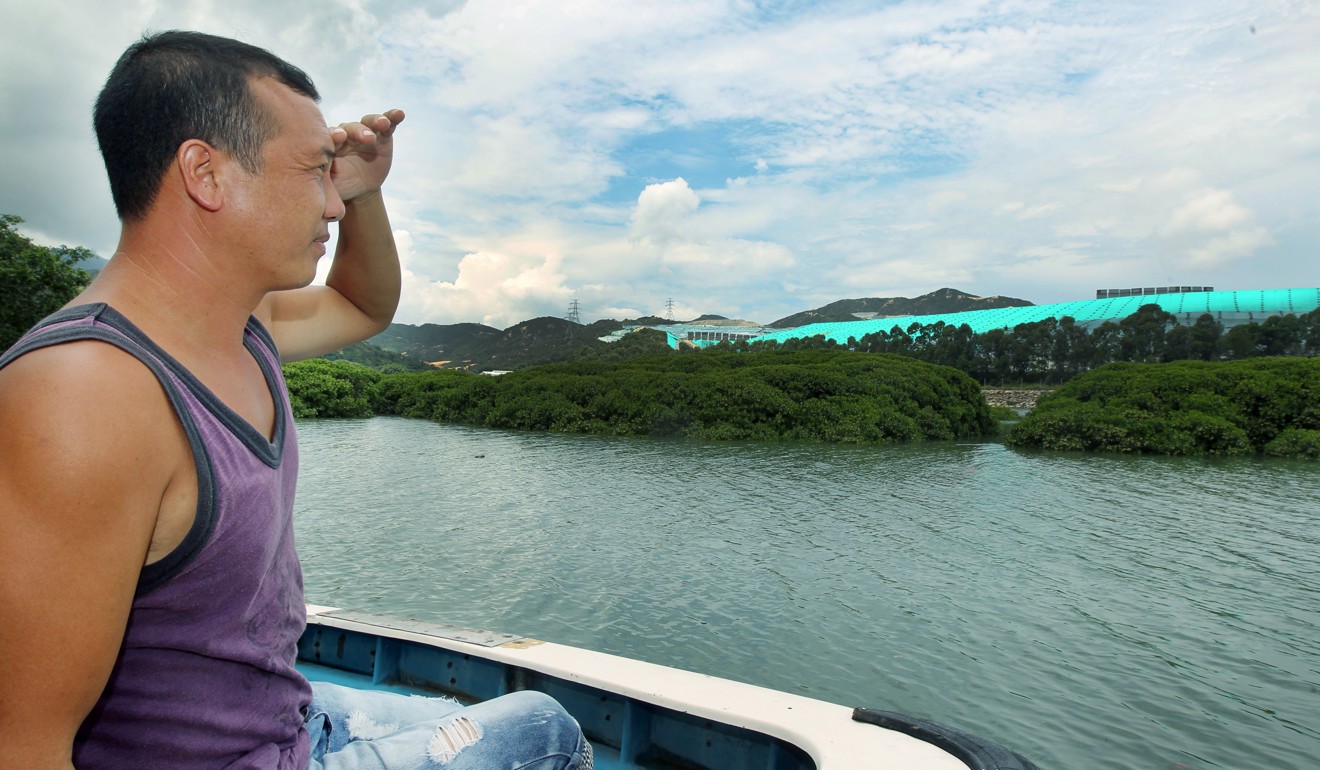
River thought to be contaminated by Hong Kong’s biggest landfill ‘within safe chemical limits’
Government contractor says it has fixed an error which led to ammonia levels 48,000 times higher than the legal limit
Water from a river thought to have been contaminated by run-off from Hong Kong’s largest landfill is within safe chemical limits, the government contractor that runs it said on Thursday.
This came after a local media outlet and a legislator earlier this month commissioned water quality tests on samples taken near the tip of the western New Territories in Tuen Mun, run by SITA Waste Services, and found concentrations of ammonia nitrogen thousands of times above safe limits, prompting a warning from environmental authorities.
A malfunctioning switch, intended to stop waste water spewing from the Tuen Mun landfill when it rained, was said to be the cause of the problem, according to the Environmental Protection Department. The department said it inspected the tip earlier this month and told the contractor to fix the problem.

“The company took immediate action to thoroughly investigate the matter and rectify the situation the same day,” the contractor said in a statement on Thursday.
“Additionally, to ensure this incident did not cause any impact to the water quality of the nearby river, in late August, the company took additional water samples, and the test results did not exceed the discharge standards for landfills.”
The contractor said the department considered it an “isolated incident”, and confirmed that the surrounding environment and water near it were unaffected.
Villagers in ‘Hong Kong’s dumping ground’ fear reclamation plan
The department has warned that it could prosecute, if evidence suggests wrongdoing.
On Tuesday, online media outlet HK01 reported that dark effluent – suspected to be from the landfill – had been leaching into a river that flows into the Ha Pak Nai wetlands, in the city’s northwest. Lab tests found ammonia levels of 1,020 milligrams per litre of water, about 48,000 times higher than the legal standard limit of 0.021mg/l.
Ha Pak Nai, with its intertidal mudflats and seagrass beds, is said to be the most important habitat for horseshoe crabs in Hong Kong. It is also a key wintering site for migratory shorebirds.
New Territories West lawmaker Michael Tien Puk-sun commissioned the Hong Kong Productivity Council, a government-funded statutory body, to carry out water tests. Those tests revealed on Wednesday that ammonia concentrations were about 9,500 times above the standard limit. He urged the government to consider revoking SITA’s licence or banning it from bidding for contracts.

The company is a subsidiary of French waste management utility Suez Environnement, and it operates both the Tuen Mun tip and the Northeast New Territories landfill in Ta Kwu Ling.
It has a track record of pollution issues.
Last year, SITA Waste Services was convicted and fined HK$200,000 (US$25,500) by a Fanling court for a total of 20 offences, mainly over illegal discharge from a restored landfill it managed at Pillar Point Valley, Tuen Mun, near the main dump.
In 2013, an affiliate of the parent company was implicated in a case in which effluent containing high levels of ammonia leaked from Ta Kwu Ling landfill into nearby rivers, contaminating water used by farmers to irrigate crops.

